If there's one constant in the world of IT infrastructure management, it's that incidents will occur. The question isn't if, but when—and more importantly, how effectively your organization can respond.
I've seen firsthand how a well-designed incident management process can mean the difference between a minor blip and a major disaster. The companies that handle incidents successfully aren't just lucky; they've invested in building comprehensive, structured processes backed by the right people, platforms, and operational frameworks.
In this guide, I'll walk you through what a complete incident management process looks like in 2025, giving you a template you can adapt to your organization's needs. Fair warning: building this capability from scratch requires significant investment in time, expertise, and technology — but the payoff in terms of operational stability and business continuity is immense.
The Foundation: Understanding ITIL Incident Management
Before diving into the template, it's worth noting that our approach at INOC is deeply rooted in the Information Technology Infrastructure Library (ITIL) framework, which remains the gold standard for IT service management. ITIL defines incident management as "the process responsible for managing the lifecycle of all incidents to restore normal service operation as quickly as possible and minimize the adverse impact on business operations."
What makes the ITIL approach valuable is how it carefully separates incident management (restoring service quickly) from problem management (identifying and addressing root causes). This distinction enables teams to focus on the immediate priority—getting systems back online—while still capturing the data needed for long-term improvements.
Our Template for Incident Management
Now, let's break down what a comprehensive incident management process should include in 2025, with specific requirements for each component.
Here’s a high-level breakdown, which we unpack in detail below.
| Step | Component | Key Activities | Success Factors |
| 1 | Event Detection & Monitoring |
Centralizing alerts, filtering noise, and correlating events. | Comprehensive visibility across all infrastructure components. |
| 2 | Incident Logging & Categorization | Creating tickets, classifying incidents, and setting priorities. | Consistent taxonomy and accurate CMDB relationships. |
| 3 | Initial Triage & Assignment | Assessing impact, creating action plans, and routing to the proper teams. | Specialized expertise and clear assignment criteria. |
| 4 | Investigation & Diagnosis | Troubleshooting, identifying root cause, and escalating as needed. | Detailed documentation and defined escalation paths. |
| 5 | Resolution & Recovery | Implementing fixes, testing solutions, and verifying restoration. | Coordinated procedures and automated remediation. |
| 6 | Incident Closure & Documentation | Confirming resolution, documenting actions, and capturing root cause. | Disciplined process for knowledge preservation. |
| 7 | Reporting & Analysis | Measuring KPIs, identifying trends, and driving improvements. | Advanced analytics and continuous feedback loops. |
A mature incident management process incorporates all seven components in a continuous cycle of improvement.
1. Event detection and monitoring
You can't fix what you don't know is broken. The first and perhaps most critical component of any incident management process is a robust event detection and monitoring system. This is your organization's early warning system—the network of sensors that provides visibility into the health and performance of your entire infrastructure.
Monitoring and observability are far more challenging than most realize. Modern infrastructure spans on-premises data centers, multiple clouds, edge locations, and countless endpoints. Each component generates its own stream of data, and distinguishing signal from noise requires sophisticated tooling and expertise. Without effective monitoring, incidents may go undetected for hours or even days, dramatically increasing their business impact.
Process Requirements:
- Establish a centralized event monitoring system that can ingest alerts from multiple sources (network devices, servers, applications, cloud platforms).
- Implement filtering mechanisms to reduce noise and focus on actionable events.
- Configure automatic correlation of related events to identify potential incidents.
- Deploy 24/7 monitoring coverage (either in-house or outsourced)
Technical Requirements:
- Network Management System (NMS) with multi-vendor support.
- Event correlation engine with machine learning capabilities.
- API integrations with all critical infrastructure components.
- Redundant monitoring systems with failover capabilities.
Most organizations significantly underestimate the complexity of building a comprehensive monitoring system. The average enterprise environment generates thousands of events daily, and without sophisticated correlation and filtering, teams quickly become overwhelmed by alert fatigue.
A few key questions to consider here:
- Which monitoring tools are currently deployed?
- What percentage of your infrastructure is actively monitored?
- How many alerts are generated daily—and how many of those are actually actionable?
- How will you ensure that monitoring thresholds are appropriately set to balance between alert fatigue and missed critical events?
- What's your strategy for monitoring integrated third-party services that you don't directly control?
- How will you ensure 24/7 coverage for monitoring systems themselves to prevent monitoring blind spots?
INOC's Ops 3.0 platform has been purpose-built over decades to solve this exact challenge, with advanced event correlation capabilities that dramatically reduce noise while ensuring critical issues are never missed. Rather than investing years and tens or hundreds of thousands of dollars developing comparable capabilities in-house, organizations can immediately inherit our mature monitoring framework that's already proven across hundreds of client environments.
2. Incident logging and categorization
Once an event has been detected, it must be properly logged and categorized to initiate the incident management process. This step may seem mundane, but it's actually foundational to everything that follows. Proper logging ensures that no incidents fall through the cracks, while accurate categorization enables efficient routing, prioritization, and resolution.
The logging and categorization system serves as the central repository for all incident information throughout the lifecycle. It must capture sufficient detail to support diagnosis while remaining accessible and usable for all stakeholders. In large environments, this system may process thousands of incidents monthly, making automation and consistent application of categorization taxonomies super critical for operational efficiency.
Process Requirements:
- Implement standardized procedures for creating incident tickets from various sources (events, phone calls, emails).
- Define a consistent categorization taxonomy for all incidents.
- Establish clear prioritization criteria based on business impact and urgency.
- Configure automatic ticket creation from correlated events.
Technical Requirements:
- ITSM platform with customizable workflows and integration capabilities.
- Configuration Management Database (CMDB) with accurate CI relationships.
- Integration between monitoring and ticketing systems.
- Automated ticket enrichment capabilities.
Building and maintaining an accurate CMDB is one of the most challenging aspects of IT operations. Without it, incident categorization becomes inconsistent, and response times suffer significantly.
- How will you maintain consistency in categorization across different teams and shifts?
- What's your plan for keeping the CMDB current as your environment changes?
- How will you link incidents to affected business services to ensure proper prioritization?
INOC's CMDB is the backbone of our service delivery, containing meticulously organized data across thousands of configuration items that enables our platform to automatically enrich incidents with essential context. Our clients benefit from this comprehensive data structure on day one, eliminating the multi-year journey most organizations face when building these capabilities internally.
3. Initial triage and assignment
This is where incidents begin their journey toward resolution. It’s the emergency room of your IT operation—a specialized function that quickly assesses each incident, determines its severity, and routes it to the appropriate responders. Getting this wrong leads to critical incidents being neglected while resources are wasted on minor issues.
At INOC, we've found that positioning specialized triage resources at the front of the process dramatically improves overall effectiveness. Our Advanced Incident Management (AIM) team focuses exclusively on performing rapid, accurate initial assessment of all incoming incidents. This specialized approach ensures that every incident receives appropriate attention based on its actual business impact, not just the loudest alarm or most recent complaint.
Process Requirements:
- Define clear triage procedures for assessing incidents.
- Establish an Advanced Incident Management (AIM) function if necessary for initial assessment.
- Create consistent criteria for determining incident priority.
- Implement automatic routing rules based on incident type and severity.
Technical Requirements:
- Ticketing system with automated assignment capabilities.
- Knowledge management system with documented triage procedures.
- Dashboards showing current queue status and workload distribution.
- Integration with on-call scheduling systems.
Effective triage requires deep technical expertise across multiple domains. Without specialized staff dedicated to this function, critical incidents often get misclassified or delayed. Our AIM team is a unique approach to triage that places senior analysts at the front of our process, enabling rapid, accurate assessment of every incident. This specialized function, which would be prohibitively expensive for most organizations to staff internally, results in our ability to achieve faster resolution times by getting incidents to the right resources immediately.
A few critical questions here:
- What criteria will determine how and when incidents are escalated to higher-tier support
- How will you manage the knowledge transfer between triage teams during shift changes?
- What backup systems are in place if your primary triage team is overwhelmed by a major incident?
4. Investigation and diagnosis
With the incident properly logged, categorized, and assigned, the focus shifts to investigation and diagnosis. This is where technical expertise meets methodical problem-solving—the phase where your team determines what's actually causing the incident and identifies potential remedies.
Investigation requires both technical depth and breadth in 2025. Engineers must be able to navigate complex systems, interpret diagnostic data, and understand the interactions between different components. In modern environments spanning multiple technology domains, no single engineer possesses all the required knowledge, making well-documented procedures and clear escalation paths essential. The goal is to quickly build a clear picture of what's happening, why it's happening, and what can be done to fix it.
Process Requirements:
- Define standard troubleshooting procedures for common incident types.
- Establish escalation paths for complex incidents.
- Create documentation templates for capturing diagnostic information.
- Implement a tiered support model (1, 2, 3) with clear handoff procedures.
Technical Requirements:
- Remote access to all managed systems.
- Diagnostic tools appropriate for each technology domain.
- Knowledge base with troubleshooting guides.
- Communication tools for collaborative problem-solving.
Troubleshooting documentation takes years to develop. Without it, incident resolution becomes highly dependent on individual expertise, creating significant operational risk when staff leave.
There are some tough questions to confront here:
- How will you capture and transfer tribal knowledge from experienced engineers to standardized procedures?
- What mechanisms ensure that similar incidents benefit from previous troubleshooting efforts?
- How will you track which troubleshooting steps have already been attempted for longer-duration incidents?
We’ve invested over two decades in building detailed knowledge bases and runbooks covering virtually every technology scenario we encounter. Our clients instantly benefit from this accumulated knowledge, rather than starting from scratch with documentation development that typically takes years to reach comparable maturity levels.
5. Resolution and recovery
Here’s where theory meets practice—where diagnoses translate into concrete actions that restore services. While many teams focus primarily on the technical aspects of resolution, the process requires careful orchestration of people, systems, and communications to be truly effective.
Resolution activities must balance the urgency of service restoration with the risk of unintended consequences. Any change to production systems carries potential risk, especially under the pressure of an active incident. This is why systematic procedures, verification steps, and clear communication are essential components of the resolution process. The goal isn't just to implement a fix but to ensure that services are fully restored and stable before considering the incident resolved.
Process Requirements:
- Define standard procedures for implementing solutions.
- Create templates for documenting resolution actions.
- Establish verification steps to confirm service restoration.
- Implement notification procedures for affected users.
Technical Requirements:
- Change management integration for tracking remedial actions.
- Automated testing capabilities to verify service restoration.
- Self-healing automation for common issues.
- Templates for user notifications.
In complex environments, service restoration often requires coordinated actions across multiple platforms and teams. Without well-defined procedures, resolution attempts can create cascading failures.
- What controls will prevent rushed fixes from causing additional problems?
- How will you balance emergency fixes with proper change management procedures during critical incidents?
- What criteria determine when automated remediation should be attempted versus human intervention?
Our platform includes sophisticated self-healing automation capabilities that can automatically resolve many common issues without human intervention. For more complex incidents, our tiered structure ensures coordinated resolution activities that draw on specialized expertise across domains. Replicating this capability in-house would require both significant technical investment and organizational restructuring that most companies find difficult to justify.
5. Resolution and recovery
Here’s where theory meets practice—where diagnoses translate into concrete actions that restore services. While many teams focus primarily on the technical aspects of resolution, the process requires careful orchestration of people, systems, and communications to be truly effective.
Resolution activities must balance the urgency of service restoration with the risk of unintended consequences. Any change to production systems carries potential risk, especially under the pressure of an active incident. This is why systematic procedures, verification steps, and clear communication are essential components of the resolution process. The goal isn't just to implement a fix but to ensure that services are fully restored and stable before considering the incident resolved.
Process Requirements:
- Define standard procedures for implementing solutions.
- Create templates for documenting resolution actions.
- Establish verification steps to confirm service restoration.
- Implement notification procedures for affected users.
Technical Requirements:
- Change management integration for tracking remedial actions.
- Automated testing capabilities to verify service restoration.
- Self-healing automation for common issues.
- Templates for user notifications.
In complex environments, service restoration often requires coordinated actions across multiple platforms and teams. Without well-defined procedures, resolution attempts can create cascading failures.
- What controls will prevent rushed fixes from causing additional problems?
- How will you balance emergency fixes with proper change management procedures during critical incidents?
- What criteria determine when automated remediation should be attempted versus human intervention?
Our platform includes sophisticated self-healing automation capabilities that can automatically resolve many common issues without human intervention. For more complex incidents, our tiered structure ensures coordinated resolution activities that draw on specialized expertise across domains. Replicating this capability in-house would require both significant technical investment and organizational restructuring that most companies find difficult to justify.
6. Incident closure and documentation
With service restored, it's tempting to consider the job done and move on to the next issue. However, proper closure and documentation are essential for long-term operational improvement. This phase captures the knowledge gained during the incident, ensuring that the organization can learn from each experience and continuously enhance its capabilities.
Thorough documentation serves multiple purposes. It provides data for trend analysis, feeds knowledge bases for future incident resolution, informs problem management activities, and demonstrates compliance with service level agreements. Without systematic closure procedures, this valuable information is lost, forcing teams to repeatedly solve the same problems and miss opportunities for proactive improvement.
Process Requirements:
- Establish criteria for confirming incident resolution.
- Create templates for documenting root cause and resolution.
- Define procedures for capturing resolution data for future analysis.
- Implement customer satisfaction measurement.
Technical Requirements:
- ITSM system with custom fields for categorizing resolution data.
- Integration with problem management processes.
- Automated customer satisfaction surveys.
- Knowledge base update workflows.
Proper incident documentation is essential for long-term improvement, but it's often neglected in the rush to move on to the next issue. Without systematic processes, valuable insights are lost.
- How will you ensure consistent quality of documentation across all incidents and teams?
- What process will link incident closure data to problem management initiatives?
- How will you verify that services are truly restored before closing incidents?
Our NOC platform enforces disciplined closure practices that capture critical data points about every incident, feeding our continuous improvement processes. This data powers our problem management capabilities, enabling us to identify chronic issues and implement permanent solutions. Organizations typically struggle to maintain this discipline internally, missing opportunities to drive meaningful operational improvements over time.
7. Reporting and analysis
The final component of a complete incident management process is reporting and analysis. This phase transforms raw incident data into actionable insights that drive continuous improvement. Without robust analytics capabilities, organizations remain stuck in reactive mode, unable to identify systemic issues or measure the effectiveness of their incident management processes.
Modern reporting goes far beyond basic metrics like ticket counts and average resolution times. Leading organizations implement sophisticated analytics that reveal patterns in incident data, identify opportunities for automation, and demonstrate the business impact of operational performance. These insights inform investment decisions, process improvements, and technology strategies that reduce incident frequency and impact over time.
Process Requirements:
- Define key performance indicators (KPIs) for incident management.
- Establish regular reporting cadence for operational metrics.
- Create processes for identifying trends and recurring issues.
- Implement continuous improvement procedures.
Technical Requirements:
- Data warehouse for storing historical incident data.
- Business intelligence tools for analyzing incident patterns.
- Dashboard system for real-time operational visibility.
- Integration with problem management for trend analysis.
Meaningful analysis requires both sophisticated tools and expert interpretation. Many organizations collect data but lack the capabilities to derive actionable insights.
A few questions put a finer point on this challenge:
- Who will own the analysis of incident trends and drive resulting improvement initiatives
- How will you measure the business impact of incidents beyond technical metrics?
- What feedback mechanisms will track whether improvement initiatives actually reduce incident volume or severity?
INOC's reporting platform combines comprehensive data collection with customized dashboards that deliver actionable intelligence to our clients. Our Customer Experience Management team regularly reviews these insights with clients, turning raw data into strategic improvement initiatives. This consultative approach, backed by proprietary analytical tools, enables a level of continuous improvement that would require dedicated business intelligence resources to achieve internally.
The Role of AIOps in Modern Incident Management
The incident management landscape has evolved dramatically in recent years with the introduction of AIOps (Artificial Intelligence for IT Operations). In 2025, effective incident management requires leveraging these capabilities to handle the scale and complexity of modern infrastructure.
Key AIOps capabilities to consider implementing:
Automated event correlation
Modern environments generate far too many events for human operators to process effectively. Advanced correlation engines using machine learning can identify related events and consolidate them into actionable incidents, dramatically reducing noise and improving response times.
Implementation Requirements:
- Historical event data for training algorithms.
- Data scientists familiar with event correlation patterns.
- Integration with multiple monitoring systems.
- Continuous refinement processes to improve accuracy.
Automatic ticket/incident enrichment
When incidents are created, AI systems can automatically pull relevant data from the CMDB, knowledge base, and historical incidents to provide context for responders.
Implementation Requirements:
- Comprehensive CMDB with accurate relationship mapping.
- Natural language processing capabilities.
- Integration between ITSM and knowledge management systems.
- Continuous learning mechanisms to improve recommendation.
Self-healing automation
For known issues with established remediation procedures, automation can implement fixes before human intervention is required.
Implementation Requirements:
- Secure automation framework with proper controls.
- Detailed runbooks for automated procedures.
- Testing environment for validating automation scripts.
- Robust exception handling.
Implementing effective AIOps requires specialized expertise in both machine learning and IT operations, along with significant investment in data infrastructure and integration. Many organizations struggle to realize the full potential of these technologies due to siloed data, inconsistent processes, and lack of specialized talent.
Why a Tiered Support Structure Matters
One of the most critical aspects of effective incident management is implementing a proper tiered support structure. At INOC, we've found that a structured approach with clear delineation of responsibilities dramatically improves resolution times and resource utilization.
Tier 1: first-level support
This level handles initial triage, basic troubleshooting, and resolution of common issues with established procedures. With proper training and documentation, Tier 1 teams can resolve 60-80% of incidents without escalation.
Staffing Requirements:
- 24/7 coverage (typically requiring at least 10-12 FTEs).
- Training in basic troubleshooting across multiple technologies.
- Strong communication skills.
- Familiarity with ITSM processes and tools.
Advanced Incident Management (AIM)
We've found that positioning skilled technical resources at the front of the process dramatically improves efficiency. The AIM team performs initial assessment and creates action plans that guide the entire resolution process.
Staffing Requirements:
- Senior technical resources with broad expertise.
- Advanced troubleshooting skills.
- Experience with complex incident coordination.
- Strong analytical abilities.
Tier 2/3: Specialized Support
These levels handle more complex issues requiring in-depth expertise in specific technology domains.
Staffing Requirements:
- Deep technical expertise in specific platforms.
- Advanced troubleshooting capabilities.
- Vendor relationship management skills.
- System design and architecture knowledge.
The CMDB: The Brain of Your Incident Management Process
If there's one component that organizations consistently underestimate, it's the Configuration Management Database (CMDB). In 2025, an effective CMDB isn't just a nice-to-have—it's the foundation of your entire incident management process.
Critical CMDB components for incident management
Asset Information
- Detailed inventory of all infrastructure components
- Hardware specifications and software versions
- Warranty and support contract details
- Location information
Relationship Mapping
- Dependencies between infrastructure components
- Service-to-infrastructure mapping
- Business impact relationships
- Integration points and data flows
Contact and Notification Information
- Ownership details for each component
- Escalation paths based on technology domain
- Vendor contact information
- Notification preferences by incident type
Historical Data
- Past incidents associated with each component
- Pattern analysis of recurring issues
- Performance baseline information
- Lifecycle and reliability statistics
Building and maintaining an accurate CMDB requires dedicated resources, specialized tools, and ongoing processes to ensure data quality. Without proper automation and governance, CMDBs quickly become outdated and unreliable, undermining the entire incident management process.
Measuring Success: KPIs for Incident Management
To evaluate the effectiveness of your incident management process, you need clear, measurable KPIs. In 2025, leading organizations are looking beyond basic metrics to more sophisticated measurements that reflect the true impact on business outcomes.
| Time to Notify |
|
| Time to Impact Assessment (TTIA) |
|
| Mean Time to Resolution (MTTR) |
|
| First-Level Resolution Rate |
|
| Incident Volume Trends |
|
Keep in mind that effective measurement requires sophisticated reporting tools, clean data, and analytical expertise. Many organizations struggle to move beyond basic metrics because they lack the infrastructure to capture and analyze more nuanced performance indicators.
Final Thoughts and Next Steps
The Decision Criteria and Weighting table below is a structured decision-making tool to help you objectively evaluate whether to build their incident management capabilities in-house or outsource them to a specialized provider. Use it to turn what is often an emotional or politically-driven decision into a data-informed process that considers multiple factors beyond just cost.
It can be helpful to:
- Justify their recommendation to executive leadership.
- Build consensus among stakeholders with different priorities.
- Ensure all relevant factors are considered in the decision.
- Create a documented rationale for the chosen approach.
The table includes seven suggested criteria that most organizations should consider. For each criterion, assign a weight from 1-10 that reflects its relative importance to your organization:
- 10 = Critically important
- 7-9 = Very important
- 4-6 = Moderately important
- 1-3 = Somewhat important
For example, if cost is your primary concern, you might give it a weight of 10, while strategic fit might receive a 6 if it's of moderate importance. For each criterion, evaluate both the in-house and outsourced options on a scale of 1-10:
- 10 = Excellent performance on this criterion
- 7-9 = Good performance
- 4-6 = Adequate performance
- 1-3 = Poor performance
For instance, an outsourced solution might score 9 on Time to Value because it can be implemented quickly, while an in-house solution might score 4 because it requires extensive development time. Multiply each option's score by the weight for that criterion to get the weighted score.
For example:
- If Cost has a weight of 8 and the in-house option scores 5, the weighted score is 8 × 5 = 40
- If Cost has a weight of 8 and the outsourced option scores 7, the weighted score is 8 × 7 = 56
Add up all the weighted scores for each option. The option with the higher total represents the more favorable choice based on your organization's specific priorities and criteria.
| Criteria | Weight (1-10) |
In-House Score (1-10) | Outsource Score (1-10) | Weighted In-House | Weighted Outsource |
| Cost | |||||
| Time to Value | |||||
| Quality | |||||
| Expertise | |||||
| Strategic Fit | |||||
| Scalability | |||||
| Risk | |||||
| TOTALS |
The final step is to review the results with stakeholders. The table provides an objective starting point for discussion, but you may want to consider:
- Are there any surprising results that should prompt reconsideration of weights or scores?
- Are there qualitative factors not captured in the scoring?
- Does the result align with your intuition? If not, why?
Whether you choose to build internally or partner with a specialized provider, having a robust incident management process is non-negotiable in today's technology-dependent business environment. The template I've outlined represents best practices based on years of operational experience, but implementing it requires careful planning, significant investment, and ongoing commitment to improvement.
Remember that incident management isn't just about technology—it's about enabling your business to recover quickly from disruptions and maintain the service levels your customers expect. The time and resources you invest in building these capabilities will pay dividends in improved reliability, customer satisfaction, and ultimately, business performance.
I hope this template provides a valuable starting point for your journey toward operational excellence. If you have questions about any aspect of incident management or want to discuss how INOC approaches these challenges, don't hesitate to reach out.
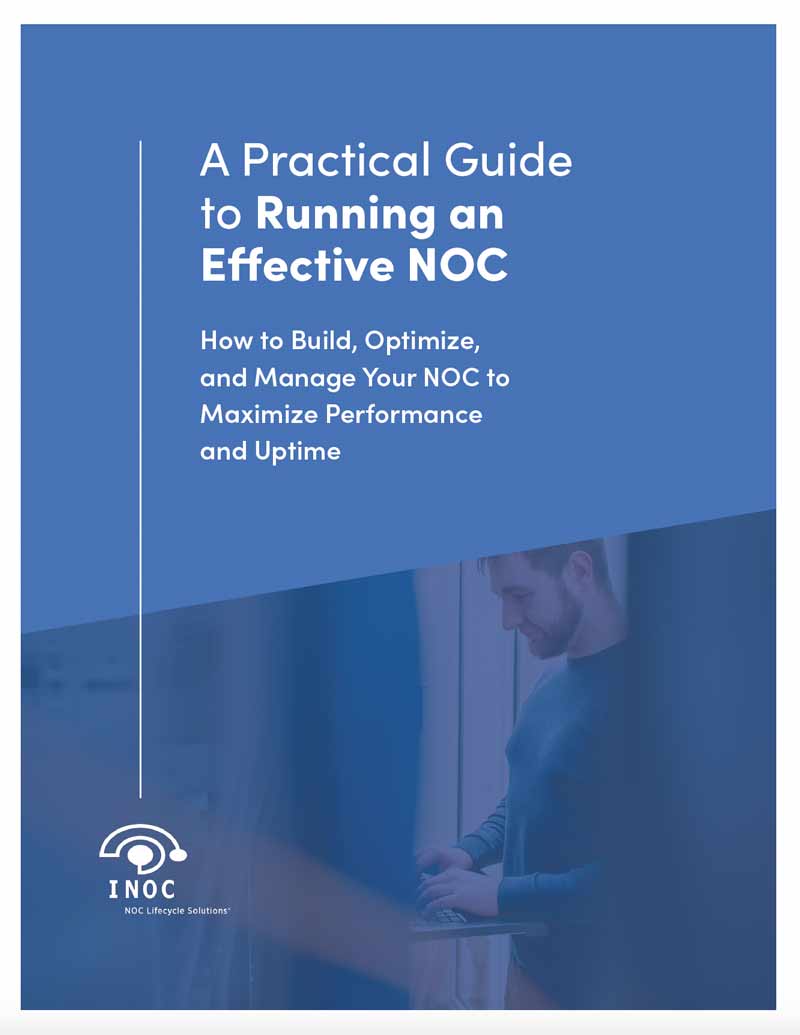
Free white paper A Practical Guide to Running an Effective NOC
Download our free white paper and learn how to build, optimize, and manage your NOC to maximize performance and uptime.





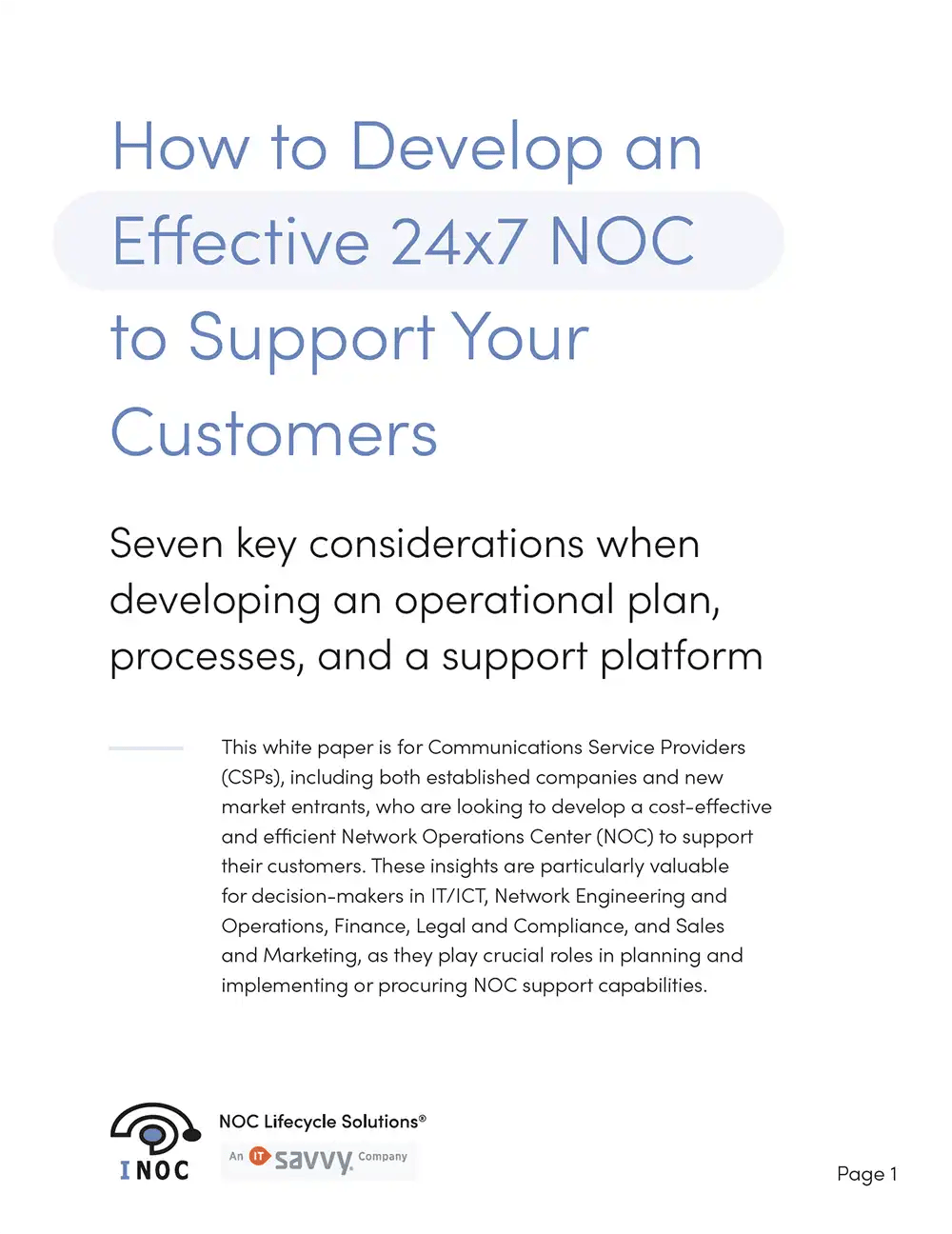

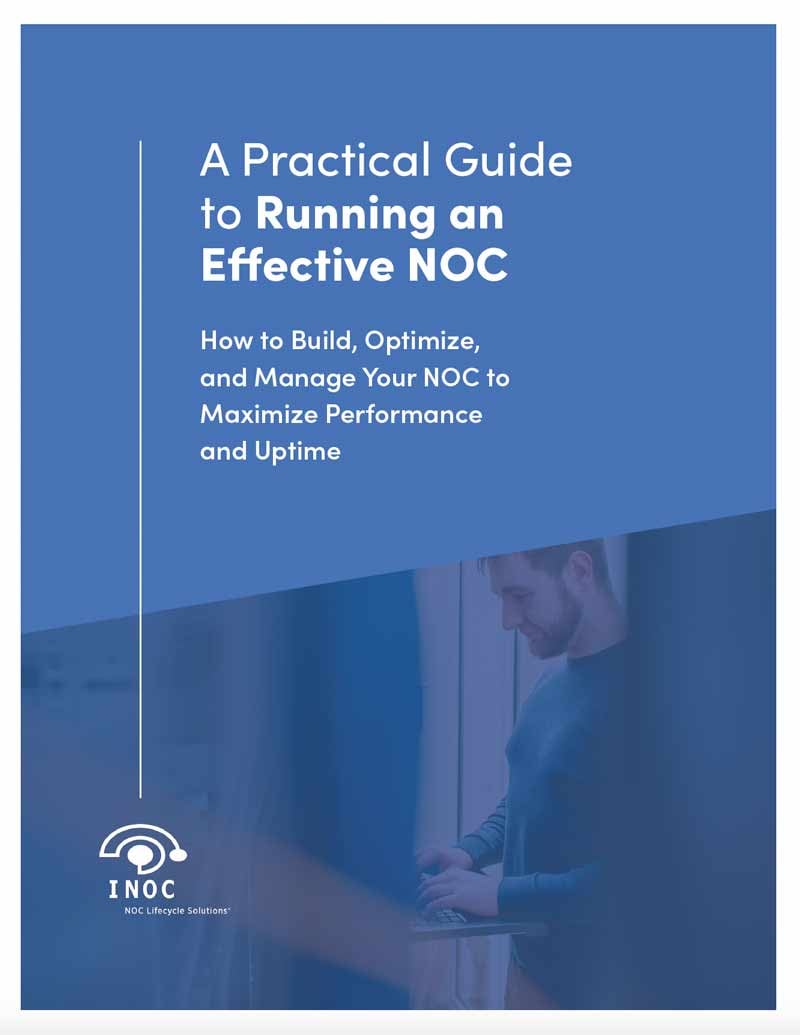
-images-0.jpg?height=2000&name=ino-WP-NOCPerformanceMetrics-01%20(1)-images-0.jpg)



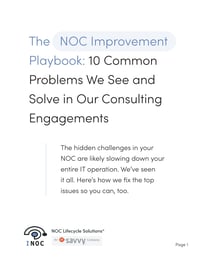
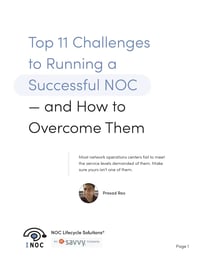
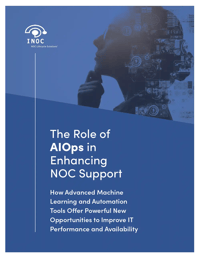
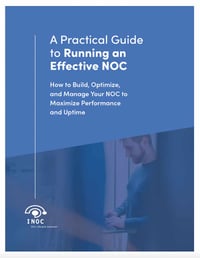
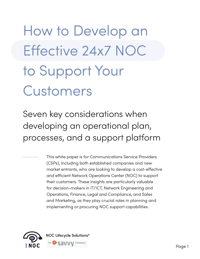
-images-0.jpg?width=200&height=259&name=ino-WP-NOCPerformanceMetrics-01%20(1)-images-0.jpg)